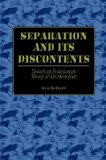The Way Life Should Be? Vol X: A Bridge Too Far

“Neoliberalisation and globalisation generate and utilise the mobility of both capital and labour. Meanwhile, labour migration is presenting a challenge to the observance of labour rights. Present-day methods of capital accumulation rely on the search for cheap labour and the relocation of production to territories that do not protect workers’ rights.” —Piotr and Pawel Zuk
It is a well-documented but much-ignored phenomenon that parts of the rural Midwest have been totally transformed due to meatpacking companies’ employment of almost exclusively Hispanic migrant labor to drive down labor costs. The effects were already stark in the early stages of America’s “browning”:
Meatpacking wages fell sharply after peaking in 1980. In Iowa, the average hourly earnings of meatpackers in 1981 was $11.33, 50 cents less than the US average $11.83. Wallace Huffman of Iowa State University noted that real meatpacking earnings fluctuated between 1963 and 1988, but were lower in 1988 than in 1963. … An INS agent in 1995 estimated that almost 25 percent of the workers in 222 meatpacking plants in Nebraska and Iowa were illegally in the US. … According to meatpackers, there is very high turnover among 10 to 30 percent of the work force, so that a plant with 500 employees may issue 1,000 to 1,200 W-2 statements at the end of the year. Some critics of the meatpacking industry argue that the companies encourage high turnover to keep most workers at the low end of the wage scale. … In Albert Lea, Minnesota, city officials were not sure that they wanted a meat packing plant employing 700 that was closed for a year reopened. According to one official, “a meatpacking plant can butcher public budgets as well as hogs.” One study found that, despite new payrolls, per capita income declines in some small communities that attract meatpacking plants.[1]
From 1990 to 1996, many Midwestern localities witnessed their Hispanic populations grow anywhere from 200% to 500%, largely at the behest of major meatpackers and other corporate interests facilitating their new labor force’s re-settlement, though not without substantial assistance from the government, social advocacy groups and law firms, and religious charities. The movement of huge numbers of alien peoples into formerly high-trust, tight-knit communities might help companies’ bottom lines in terms of labor costs and general product consumption, but it splinters and ravages these communities—which is also by design. The Democrat Party benefits from a bumper crop of new voters, the religious charities get to feel righteous, the Chamber of Commerce gets its profits, and the assorted “social advocacy groups” get to act out particular ethnic grievances—often via the witting or unwitting accomplices in the Christian charities—under the guise of humanitarianism. The list of winners definitely does not include the locals:
Given their small populations, rural towns can be transformed almost overnight by immigration, leading to issues that range from an inability to communicate with public authorities to non-English speaking children in school. Lexington, Nebraska went from a population that was five percent Latino in the 1990 Census to nearly 45 percent Latino in 1994, on a Census re-check. The growth of the Latino population is attributed to IBP, a meat packer that employs 2,500 workers, and has a $58 million annual payroll, in a town of 9,000. The transformation of Lexington has drawn mixed reviews. On the one hand, business, especially in the downtown area, is up. However, some established residents complain that Spanish-speaking meatpackers and their families drive old cars without licenses and insurance, and that the needs of their children lower the quality of the schools. The crime rate in Lexington has doubled. … According to one Nebraska police chief, “where you have the meatpacking plants, you have an immigration of Hispanics, and you are seeing an increase of gangs.”[2]
This phenomenon has been replicated across the country in different industries, from Wisconsin’s dairy industry[3] to Georgian poultry.[4] In Maine, it is the blueberry, broccoli, forestry, egg, seafood, and apple industries.
Let us consider tiny Milbridge, Maine, home to the Mano en Mano organization first profiled in Volume III, as a starting point. Hispanics first started to come to the area when a sea cucumber processor used a labor contractor to hire migrant labor in 1997; sea cucumbers are similar to starfish and their meat is highly-prized in Asia. The first workers were former blueberry rakers, and network hiring subsequently led to more Hispanic migrants. Consequently, Milbridge, a town of 1,300, is mostly White, but 24% of the student body is now Hispanic. Wild lowbush blueberries in Maine are “raked” from barrens in the coastal forests of the northeastern (“Down East”) part of the state. Cherryfield Foods, Inc. is one of the largest blueberry producers in Maine and provides free housing to its predominantly Mexican workers. Cherryfield is owned by Oxford Foods in Nova Scotia, Canada. Maine produces about $85 million worth of blueberries a year. Throughout the 1990s and well into the 2000s, most of the seasonal harvesters were Hispanic immigrants or migrant laborers complemented by Micmac Indians from Maritime Canada. According to Maine’s Department of Labor, 18% of farm workers in the state are migrants, defined as those who traveled too far from their usual residence to return at the end of the workday. Ed Flanagan, president of Jasper Wyman and Son, a berry harvester,[5] told the Washington Post on April 10, 2006 that Hispanic workers are “like migratory birds. I mean, we don’t have to do much and they show up every year.” Washington County had almost no Hispanics in 1990, but today they dominate the harvest crews that “rake” berries from their bushes, not to mention the labor force of Aroostook County’s major broccoli farms, the coastal seafood processing plants, and other agricultural or seafood-related industries. The initial batch of migrant workers showed up because, “They say that they left California or Texas to enjoy the higher wages and better benefits associated with fewer newly arrived Mexican workers.”
The increased use of farm labor contractors is another major factor in the increased use of migrant Hispanic, mostly mestizo, labor in Maine’s agricultural industries, but the presence of advocacy groups such as Mano en Mano which are, in their own words, “working hard to alleviate impediments to settlement in the region,” is also a contributing factor to be considered. All of the laborers’ (and their families’) health care (including dental, eye care, and psychological care), transportation, and translation needs are provided for by another 501(c)(3) called the Maine Mobile Health Program, Inc. (MMHP), which is focused on “equitable healthcare and social justice.” Do you get free housing, healthcare, transportation, and psychological support through your job? MMHP gets a small subsidy from the US Department of Agriculture, and, according to the most recent financial statements I could find, over $1.4 million from the US Department of Health and Human Services. It was recently announced that MMHP—along with twenty other organizations, many of which we have covered such as MEJP, MIRC, and the like—would be receiving a $1.17 million grant from Maine Health Access Foundation.
In a joint project between Mano en Mano and Colby College entitled, “From Sojourner to Settler,” published in April 2017, we learn that when Mano en Mano conducted its first HUD-designed (Housing of Urban Development) needs assessment in 2011, “The organization found that 78.5% of the respondents of the HUD survey were born in Mexico; 89% self-identified as Hispanic/Latino. In that year, 93% were employed in farm-work.” Further, from the joint study conducted by Mano en Mano and Colby itself:
When asked, 98% of all respondents identified the town in which they live as “home” implying these sojourners have in fact become settled…[of respondents] under the age of 18 years. … 87% of these were born in the U.S. … Eighty percent of respondents to our survey identify as Latino or Hispanic. Eighteen percent identify as having two or more racial identities and 1% identify as White. Forty-three percent of respondents report speaking only Spanish in their household, while 45% report speaking both Spanish and English. Nine percent of households reportedly speak English only at home (my note: this is not “diversity,” this is an ethnic enclave)…22% of households don’t feel comfortable interacting or calling with police (my note: we can probably guess why).
What we can see here is that “documented” or not, the migrants are putting down roots and becoming settled, which is an ominous sign for Maine’s demographic future. The workers surveyed are already averaging over three children per family, which is well over the US average, but only slightly higher than the local average of 2.7. It doesn’t take much imagination to see where this is going, however.
One by-product of the reliance on predominantly Mexican-mestizo labor is that these families have coalesced into communities with a shared culture and language—which has made their ability to organize and demand better working conditions, benefits, and higher wages much easier, especially as, 1) their only competition locally is Whites who would demand even more and greater protections, and 2) there is a paucity of readily-available scab labor to replace these workers. In the late-1990s and 2000s, we began to see push-back against serious labor abuses as Mexican workers started to understand their rights and interface with local groups about unionization. Let’s use the saga of Jack DeCoster, farm magnate, as a filter, with a timeline combined from UC Davis’s catalogue Rural Migration News and Marler Clark’s website:
· 1996: DeCoster was fined $3.6 million for health and safety violations at the family’s Turner egg farm, which then-Labor Secretary Robert Reich termed “as dangerous and oppressive as any sweatshop we have seen.” Regulators found that workers had been forced to handle manure and dead chickens with their bare hands and to live in filthy trailers.
· 1996: In Turner, Maine, Mexican immigrants dominate the work force at the DeCoster Egg Farm, the largest brown-egg producer in the US…was fined $ 2 million by the federal Occupational Safety and Health Administration for violations of health and safety laws. This fine and publicity resulted in boycotts of DeCoster eggs, and a law approved in Maine that permits workers on large farms to unionize under state laws. Most farm workers are not covered by the NLRA.
· 1997: In December, the NLRB announced that it would issue complaints charging that DeCoster unlawfully interfered with workers engaged in union activities, spied on workers and fired union supporters; the United Paperworkers International is attempting to organize DeCoster workers. The charges were filed against the two successor companies, Maine Ag and Quality Eggs of New England. DeCoster paid $2 million to settle a $5.8 million federal fine for health and safety violations, and split into two companies…In the 1980s and 1990s, DeCoster was fined repeatedly for violations of workplace safety laws.
· 1999: The company paid $5 million to settle wage-and-hour claims involving 3,000 workers.
· 2002: The Occupational Safety and Health Administration fined the family’s Maine Contract Farming operation $345,810 for an array of violations. The same year, DeCoster Egg Farms of Maine paid $3.2 million to settle a lawsuit filed in 1998 by Mexican workers alleging discrimination in housing and working conditions. Afterward, DeCoster subdivided into eight smaller firms on 1,300 acres near Turner.
· 2008: Maine Contract Farming LLC of Turner, Maine, the successor to DeCoster Egg Farms, was fined $150,000 by OSHA for ordering workers to retrieve eggs from a building with a partially collapsed roof.
· Jack DeCoster’s Turner and Winthrop Maine egg farms were sued in August 2011 by a plant manager who alleged that DeCoster treated Mexican-born as “virtual slaves.” The manager said that DeCoster told him to “get rid of the gringos” because Mexicans accepted his authority.[6],[7]
These abuses are just from DeCoster’s Maine farms; his farms in Iowa were shockingly worse.[8] What you’ll notice is that the suits and fines, with the one exception of the plant manager in 2011, have seemed to dry up over the last decade. Is it that DeCoster suddenly became a responsible and ethical human being, or is it that as the 2000s progressed, Hondurans, Guatemalans, Haitians, Jamaicans, and sub-Saharan Africans started arriving in Maine in appreciable numbers? The uniform ethnic make-up of the migrant workers in Maine throughout the 1990s and into the 2000s allowed the workers to band together and attempt to unionize as well as file class-action law-suits. Clearly this is not beneficial for the agricultural industry, so a more diverse work force had to be imported. Each success wave breaks the bargaining and organizational power of the group that comes before and keeps wages low. It also harms the domestic population for the aforementioned reasons. I’ll say it again: this has nothing whatsoever to do with humanitarianism.
The Mexican enclave in and around Milbridge will not last. Already Mano en Mano is listing Haitian Creole alongside Spanish for the translation services offered, and you will find large numbers of guest workers along the coast from Jamaica and Eastern Europe. This is before considering the huge influx of sub-Saharan Africans or the other mestizo groups from Central America. The Maine Department of Labor has started to organize job fairs targeting African immigrant communities in Lewiston and Portland, bringing together translators, NGOs, and prospective employers. From the “Immigrant and Refugee Integration and Policy Development Working Group Final Report” for the City of Lewiston, December 2017:
According to the 2017 Maine Chamber of Commerce report, new immigrants and their children are anticipated to account for 83% of growth in the U.S. workforce between 2000 and 2050…However, as the writers of the report indicate, to incentivize immigrant participation in the Maine economy, “we need to be receptive to the fact that many of the people who will grow our population, workforce, and economy will look different than most of us and have different backgrounds and cultures.”… Several area employers, including Staff Management, Aramark, L.L. Bean, Barber Foods, Pionite, Labor Ready, Central Maine Meats, Commonwealth Poultry, Cozy Harbor Seafood, the Harraseeket Inn, Clover Manor, Conform, St. Mary’s Regional Medical Center, HW Staffing, Central Maine Medical Center, TJ Maxx, J.C. Penney, Kohl’s, Lowe’s, Home Depot, BJ’s Wholesale Club, Wal-Mart (both retail and distribution), K-Mart, Hannaford, Shaw’s, Belanger Farms, Pineland Farms, and Goodwill, have adopted practices and policies to hire and support a diversified workforce.[9]
What all of this really means is that each successive wave of immigrants breaks the backs of the organizing attempts of the collected group before them, but the power brokers seem finally to have grasped that if you can’t even understand or communicate with the person working next to you, you sure as hell cannot propose unionizing to them. Thus, the more diverse a workforce, the less likely it is to be able to take collective action, and this is before considering long-standing ethnic grievances in addition to linguistic and cultural barriers. When they say “diversity is our strength” they mean “diversity is their strength,” for they envision a state of unlimited immigration from every nook and cranny of planet earth keeping things perpetually in the black.
Reposted with permission from The Anatomically Correct Banana.
[1] https://migration.ucdavis.edu/rmn/more.php?id=126
[3] “Some Wisconsin dairy farmers, claiming that 40 percent of hired workers on dairies are immigrants, were quoted as saying: ‘If E-Verify passes, it will kill the dairy industry in Wisconsin.’ John Rosenow of Rosenholm-Wolfe Dairy asserted that ‘60 percent of the milk that’s harvested is harvested by immigrants, and the vast majority are probably undocumented.’”
[4] “The Washington Post on April 3, 2006 profiled immigration to Gainsville, Georgia, the self-proclaimed ‘poultry capital of the world.’ Between 1990 and 2005, the city’s population almost doubled to 32,000, while the number of Hispanics quadrupled, so that the town is now 50 percent Hispanic. Gainsville’s demographic change was induced by poultry processors such as Fieldale Farms, Koch Foods and Pilgrim’s Pride. About 3,000 of Fieldale’s 4,700 workers are Hispanic and earn $10 an hour. About 70 percent of the pupils in Gainesville Elementary are Hispanic, and 90 percent qualify for subsidized meals.”
[5] Berry farm Jasper Wyman and Sons paid $118,000 to the Immigration and Customs Enforcement Agency in November 2010 for failing to properly complete I-9 forms on the 900 seasonal workers hired each year.
[6] https://migration.ucdavis.edu/rmn/more.php?id=250
[7] https://www.marlerblog.com/case-news/wright-county-egg-owner-decoster-seems-to-be-one-bad-egg/
[8] “In 2001, the Iowa Supreme Court ruled that DeCoster was a “repeat violator” of state environmental laws, citing violations involving the family’s hog-farming operations. The family was forbidden to expand its hog-farming interests in the state. Also in 2001, DeCoster Farms of Iowa settled, for $1.5 million, a complaint brought by the Equal Employment Opportunity Commission that DeCoster had subjected 11 undocumented female workers from Mexico to a “sexually hostile work environment,” including sexual assault and rape by supervisors… n 2003, Jack DeCoster paid the federal government $2.1 million as part of a plea agreement after federal agents found more than 100 undocumented workers at his Iowa egg farms. It was the largest penalty ever against an Iowa employer. Three years later, agents found 30 workers suspected of being illegal immigrants at a DeCoster farm in Iowa. And in 2007, raids in Iowa uncovered 51 more undocumented workers.” https://www.marlerblog.com/case-news/wright-county-egg-owner-decoster-seems-to-be-one-bad-egg/
[9] https://www.lewistonmaine.gov/DocumentCenter/View/8885/REPORT—ImmigrantandRefugeeIntegrationandPolicyDevelopmentWorkingGroupFinalReport

















